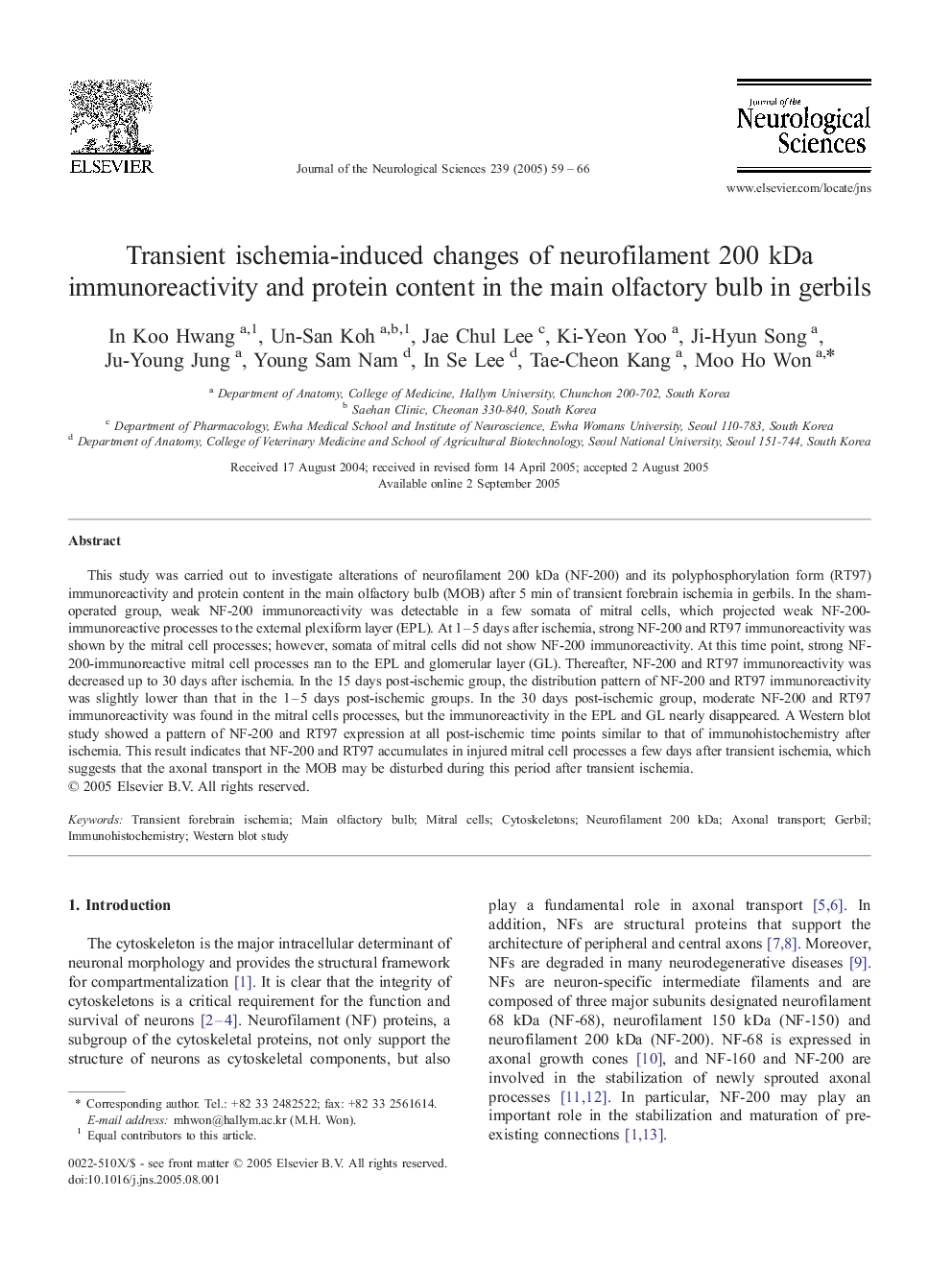| Article ID | Journal | Published Year | Pages | File Type |
|---|---|---|---|---|
| 10742415 | Journal of the Neurological Sciences | 2005 | 8 Pages |
Abstract
This study was carried out to investigate alterations of neurofilament 200 kDa (NF-200) and its polyphosphorylation form (RT97) immunoreactivity and protein content in the main olfactory bulb (MOB) after 5 min of transient forebrain ischemia in gerbils. In the sham-operated group, weak NF-200 immunoreactivity was detectable in a few somata of mitral cells, which projected weak NF-200-immunoreactive processes to the external plexiform layer (EPL). At 1-5 days after ischemia, strong NF-200 and RT97 immunoreactivity was shown by the mitral cell processes; however, somata of mitral cells did not show NF-200 immunoreactivity. At this time point, strong NF-200-immunoreactive mitral cell processes ran to the EPL and glomerular layer (GL). Thereafter, NF-200 and RT97 immunoreactivity was decreased up to 30 days after ischemia. In the 15 days post-ischemic group, the distribution pattern of NF-200 and RT97 immunoreactivity was slightly lower than that in the 1-5 days post-ischemic groups. In the 30 days post-ischemic group, moderate NF-200 and RT97 immunoreactivity was found in the mitral cells processes, but the immunoreactivity in the EPL and GL nearly disappeared. A Western blot study showed a pattern of NF-200 and RT97 expression at all post-ischemic time points similar to that of immunohistochemistry after ischemia. This result indicates that NF-200 and RT97 accumulates in injured mitral cell processes a few days after transient ischemia, which suggests that the axonal transport in the MOB may be disturbed during this period after transient ischemia.
Keywords
Related Topics
Life Sciences
Biochemistry, Genetics and Molecular Biology
Ageing
Authors
In Koo Hwang, Un-San Koh, Jae Chul Lee, Ki-Yeon Yoo, Ji-Hyun Song, Ju-Young Jung, Young Sam Nam, In Se Lee, Tae-Cheon Kang, Moo Ho Won,
